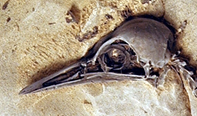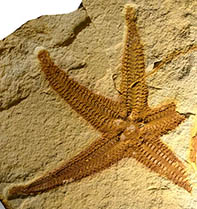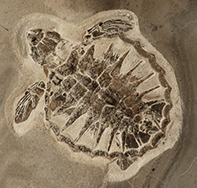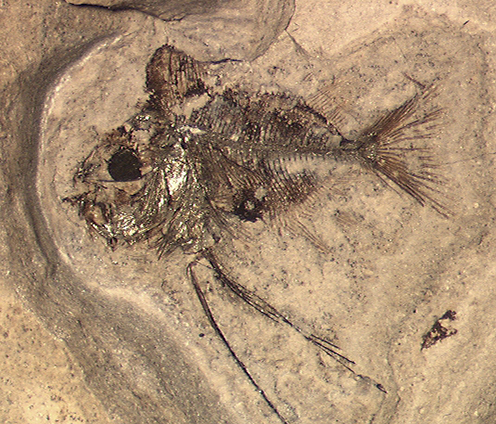Natural history museums in Denmark

Danekræ DK 212: Fossil skull of Morsoravis sedilis (Photo: Sten L. Jakobsen)
Any person who finds or gains possession of Danekræ fossil trove, shall immediately deliver it to the Natural History Museum of Denmark, or one of the nationally recognized local natural history museums (see list at the bottom of this page).
The page also includes information for museums, who receive potential fossil trove.
Procedure at initial accession
- The finder should note down as many details about the location of the discovery as possible and then contact the closest natural history museum (see list at the bottom of this page). The museum will then make a preliminary evaluation of the find. If you are not able to deliver the object to a state-recognized natural history museum, please contact Ida Bonnevier Wallstedt for guidance on how to send the object to the museum. It is also possible to send an email wth photos and information about the location of the discovery to the chairman and/or secretary of the national Danekræ committee.
- If the museum receiving the specimen deems that it may be considered potential Danekræ fossil trove, the specimen is left in the care of the museum in exchange for a receipt. The receipt must contain a short description of the find, preferably alongside a sketch or photo, as well as the name, address and contact information of the finder.
- The museum should then contact the national Danekræ committee appointed by the Natural History Museum of Denmark. The committee arranges for expert evaluations and subsequently decides if the specimen should be declared Danekræ fossil trove. They also decide on the size of renumeration for the find.
- If the museum immediately is able to decide that the present specimen is of such common nature, that it is unlikely to be declared fossil trove, it can be verbally communicated to the finder.
If the museum considers that the specimen may potentially be declared Danekræ fossil trove, the specimen must be taken care of. The museum should also make certain that the entire specimen has been accessed, and ask the finder for any remaining parts, where necessary.

Danekræ DK 717: Fossil Starfish (Photo: Sten L. Jakobsen)
The finder must receive a receipt of accession, which must contain a short description of the find, preferably alongside a sketch or photo. This removes confusion about the exact identity of a specimen during the official fossil trove evaluation process, including the return of specimens which were rejected as fossil trove. The receipt must also contain the name, address and contact information of the finder, as well as many details about the location of the discovery as possible.
The museum is also responsible for transferring the specimen to the Danekræ comittee at the Natural History Museum of Denmark, alongside a copy of the above-mentioned receipt.
Please be aware that the specimen is still the legal possession of the finder. No further preparation may be made on the specimen, unless the finder has given written consent to this. In all cases, avoid further preparation of the specimen, unless it is deemed necessary to evaluate whether the specimen should be transferred to the Danekræ committee or not.
Finally, the museum is requested not to take any contact with the press regarding the evaluation of the potential fossil trove, before the Danekræ committee has made their final decision. Currently, the evaluation process for individual specimens averages between 6 and 12 months, depending on the nature of the potential fossil trove.

Danekræ DK 567: Juvenile sea turtle Tasbacka danica (Photo: S. L. Jakobsen)
Exhibitions of Danekræ fossil trove
While the Danekræ fossil trove collection is physically housed and formally registered at the Natural History Museum of Denmark, a large number of specimens are on long-term display at local natural history museums around Denmark, usually closely associated with the localities they were discovered in. Specimens are also routinely on loan for special or temporary exhibits.
If your museum is interested in exhibiting relevant Danekræ fossil trove specimens, please contact the chairman and the secretary of the Danekræ committee.
The committee will then evaluate the request in close cooperation with the Head of collections of the Natural History Museum of Denmark, based on an collective analysis of the relevance, degree of preservation and fragitility of the specific specimens.
List of natural history museums i Danmark
Fisheries and Maritime Museum, Tarphagevej 2, DK-6710 Esbjerg V
Fossil- and Moclay Museum, Skarrehagevej 8, DK-7900 Nykøbing Mors
Fur Fossils, Nederby 28, DK-7884 Fur
Natural History Museum of Denmark, Øster Voldgade 5-7, DK-1350 København K
Geomuseum Faxe, Østervej 2, DK-4640 Faxe
The Green Museum, Randersvej 4, DK-8963 Auning
Museum Sønderjylland Gram Clay Pit – Palaeontology, Lergravsvej 2, DK-6510 Gram
Naturama, Dronningemaen 30, DK-5700 Svendborg
Natural History Museum Aarhus, Wilhelm Meyers Allé 10, DK-8000 Aarhus C
Zoological Museum, Natural History Museum of Denmark, Universitetsparken 15, 2100 København Ø
If one of the above museums is too geographically distant, please contact the nearest local museum of cultural history, which will process the specimen.

Danekræ DK 101: Fossil ribbonfish (Lampridiformes) (Photo: S. L. Jakobsen)
